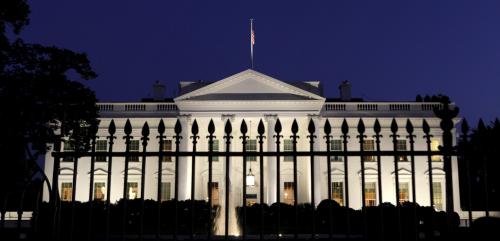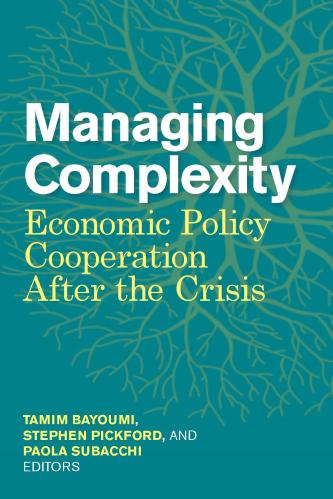As released Thursday, President Trump’s “America First” budget blueprint would actually put U.S. manufacturers and the national economy well behind their global peers.
The proposed cuts to the nation’s economic development and scientific infrastructure would erode critical programs that help regions succeed in the global economy. These range from technical assistance for small manufacturers, to incentives for regional firms to solve shared technical problems, to research funding for innovations that will define tomorrow’s global economy.
In fact, many of the proposed program cuts would undercut the very goals on which President Trump campaigned. For example, while the president promised to reduce the trade deficit, the $5.8 billion cut from the National Institutes of Health’s budget surely won’t help decrease our $55.8 billion trade deficit in pharmaceutical products. NIH funds more than 300,000 researchers across the country and represents the nation’s feedstock of pharmaceutical research. The budget also eliminates the Overseas Private Investment Corporation and the U.S. Trade Development Agency, which help U.S. companies access foreign markets.
The president also campaigned to bring back American manufacturing jobs—yet the budget calls for the elimination of programs such as the Manufacturing Extension Program (MEP), which has proven highly successful at increasing productivity for small-and medium-sized manufacturers. For every one dollar of federal investment, MEP generates almost $18 dollars in sales growth for manufacturers. Similarly, the budget calls for eliminating the Advanced Technology Vehicle Manufacturing Program, which helped Tesla develop its electric car (the company now employs 17,000 workers).
At the heart of President Trump’s budget are three major misconceptions about how economic competitiveness really works.
First, somewhat ironically for a Republican, the president thinks the bully pulpit and mandates from Washington can trump the economics of a global economy. The administration’s manufacturing strategy is to publicly shame companies that move abroad and develop trade barriers (tariff and non-tariff) to reduce U.S. firms’ exposure to the global economy. Yet, the graveyard of U.S. economic populism is filled with politicians who thought they could slow global competition with a megaphone.
The only sure way for U.S. manufacturers to survive is to become more competitive—creating better products for cheaper—than their global rivals. Initiatives like the Economic Development Administration have helped regional economies become more competitive by providing matching grants in targeted industry clusters where these regions have an international edge. Despite this, the president’s budget calls for the elimination of EDA.
The Trump method of reshoring manufacturing jobs is also far more expensive than building the competitiveness of the sector. When the president negotiated Carrier away from leaving Indiana for Mexico, it saved 800 jobs at the cost of $2 million per job. In contrast, analysis of MEP shows that the program creates one job in the manufacturing sector for roughly $1,900. This makes sense. Trying to overpower global economic forces has always been a tall (and expensive) order. Hardly the stuff of a budget conservative.
The second problem is that his administration believes that less government, limited regulation, and a low statutory corporate tax rate is sufficient to grow a globally competitive economy. This philosophy fundamentally misunderstands how countries compete in the modern economy: What really differentiates successful high-value economies is their ability to innovate. In the technologies that define U.S. competitiveness—robotics, data analytics, drug development, energy storage—the interplay between public sector research and development and private sector innovation is essential. For example, 80 percent of the most transformative new drugs over the last 25 years have resulted from collaboration between industry and universities. NIH funds an astounding 45 percent of all health care research (from all funding sources) in U.S. universities. Thus, the proposed funding cuts would decimate the nation’s ability to compete in new drug discoveries. Similarly, the cuts to the Department of Energy’s Office of Science would hamstring the country’s ability to lead the world in new generation energy products.
Finally, the president refuses to learn from our national competitors—like an NCAA basketball coach who doesn’t look at rival’s tapes leading into March Madness. The programs the president plans on cutting have analogues in most advanced countries. Germany’s Fraunhofer Institutes, Australia’s Enterprise Connect, Canada’s Industrial Research Assistance Program, Japan’s Kohsetsushi Centers, and the U.K.’s Manufacturing Advisory Service all offer similar programming to the MEP and maintain healthy support across the political spectrum because they make these countries stronger. Instead of cutting programs that our rivals consider successful, we should put them on steroids.
The proposal to eliminate the NIH’s Fogarty International Center is a perfect example of the administration’s anti-competitive, insular nature. Fogarty fosters partnerships with health researchers and institutions abroad in order to improve scientific discovery at home. If we as a country aren’t engaged in learning from the successes of other countries, we will fail to remain competitive.
Trump’s budget, like much of his rhetoric, is fundamentally backward-looking. It attempts to support a 21st century economy with 20th century tools and ideas.
The Brookings Institution is committed to quality, independence, and impact.
We are supported by a diverse array of funders. In line with our values and policies, each Brookings publication represents the sole views of its author(s).










Commentary
Trump’s “America First” budget will leave the economy running behind
March 17, 2017